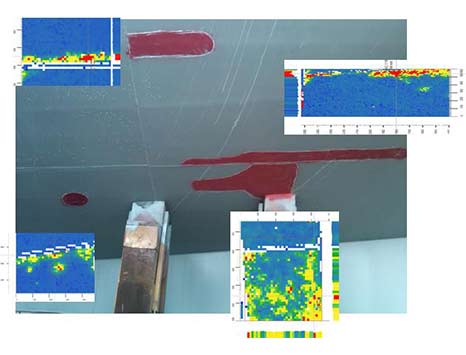Ship Hull Inspection using Automated Ultrasonic Scanning
Hulls of steel boats and ships are prone to collecting moisture leading to the rusting of frames, stringers and plating. Some of the areas inside a hull may be hard or impossible to access using conventional inspection methods.
The usual method of ship hull inspection involves point-by-point measurements using ultrasonic thickness gages. Such technique can only cover a small fraction of the hull because of the large surface area resulting in not-so-clear results. Small areas of rusting/deterioration go undetected often which can result in expensive emergency dry docks later.
TISEC uses an automatic ultrasonic robotic scanner to provide the complete picture of the ship hull’s condition. The use of such equipment makes the inspection process accurate and fast, saving time and costs. The scans provide an image of the corroded surface that can be compared directly with visual observations. These scans can be repeated at intervals and the images compared to monitor the progress of corrosion.
TISEC Provides A Complete Report From The Ultrasonic Hull Side Scanning Promptly And The Contained Information Helps The Clients In Making The Following Informed Decisions:
- Perform immediate corrective repairs (such as replacing metal in the hull).
- Perform immediate preventive actions which mayl save expensive repairs in the future.
- Schedule for repairs in areas that are deemed structurally sound now but may need corrective repair late.
The complete automated ultrasonic scanning surveys/inspections carried out by TISEC provides assurance to customers, ship/boat owners, insurance companies and government agencies that all efforts are made to minimize expensive emergency dry-docks, increase reliable operation, and the safety of cargo and personnel.

Automated Ultrasonic Scanning Advantages
The results of inspections enable the owners and operators of vessels to quantify the extent of corrosion in susceptible regions of the hulls; provides the operators with confidence in the ability of the vessels to continue in service without major problems and allows for repair scheduling to be more accurate.




